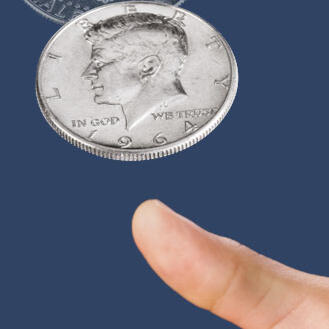
Coin flips are used for various purposes, including:Decision Making: Coin flips are often used as a simple and fair method to make decisions when there are two possible outcomes. For example, it can be used to determine who goes first in a game, settle disputes, or make choices between two options.Probability and Statistics: Coin flips are used to demonstrate basic concepts of probability and statistics. They provide a tangible example of an experiment with two equally likely outcomes—heads or tails—making them useful for teaching and understanding concepts like probability, independence, and the law of large numbers.Randomization: Coin flips are employed as a method of randomization in experiments and studies. By assigning treatments or conditions based on the outcome of a coin flip, researchers can help ensure unbiased and randomized allocation, minimizing potential bias and confounding variables.Sports Officiating: In some sports, coin flips are used to determine which team or player has the first choice or possession. For example, in American football, a coin flip is used to determine which team gets to choose whether to kick or receive the ball at the start of the game or overtime.Tossing a Coin for Fun: Coin flips can be used as a casual way to settle minor decisions, such as who gets to choose the movie, who buys lunch, or who gets the last slice of pizza. It adds an element of chance and randomness to decision-making processes.It's important to note that while coin flips can be a convenient and fair method for decision making, they are not suitable for all scenarios, especially those that require more complex considerations or where the outcomes are not equally probable.
What are coin flips used for?
Coin flips are used for various purposes, including:Decision Making: Coin flips are often used as a simple and fair method to make decisions when there are two possible outcomes. For example, it can be used to determine who goes first in a game, settle disputes, or make choices between two options.Probability and Statistics: Coin flips are used to demonstrate basic concepts of probability and statistics. They provide a tangible example of an experiment with two equally likely outcomes—heads or tails—making them useful for teaching and understanding concepts like probability, independence, and the law of large numbers.Randomization: Coin flips are employed as a method of randomization in experiments and studies. By assigning treatments or conditions based on the outcome of a coin flip, researchers can help ensure unbiased and randomized allocation, minimizing potential bias and confounding variables.Sports Officiating: In some sports, coin flips are used to determine which team or player has the first choice or possession. For example, in American football, a coin flip is used to determine which team gets to choose whether to kick or receive the ball at the start of the game or overtime.Tossing a Coin for Fun: Coin flips can be used as a casual way to settle minor decisions, such as who gets to choose the movie, who buys lunch, or who gets the last slice of pizza. It adds an element of chance and randomness to decision-making processes.It's important to note that while coin flips can be a convenient and fair method for decision making, they are not suitable for all scenarios, especially those that require more complex considerations or where the outcomes are not equally probable.